The news, investigations, and ongoing passenger concerns resulting from December’s Hawaiian Airlines mass casualty turbulence incident are not going away. The subject remains in everyone’s minds.
BOH editor Collin flew twice in the past week on Hawaiian to and from the mainland. He reported turbulence in both directions that was “more noticeable on the way back. There were those times when there was a big drop coming into Maui, where the plane felt weightless for a moment. I was definitely thinking about that flight from December, and I was glad to be strapped in,” he said. Collin also reported that the flight attendants were vigilant about their enforcement regarding seat belts on his flights.
As we previously reported, the plane was on approach to Honolulu and likely within 10 minutes of beginning its descent when the problem occurred. It is the time most likely, when safe, for passengers to use the lavatories one last time and to stow their cabin baggage.
The law firm has dripped this case to the media.
Seat belt enforcement wasn’t implemented. That simply was not done on this flight and that is what should’ve been done on this flight. And, if that had been done, then nobody would have been injured.” Nomaan Husain, attorney for victims.
The attorney said they are still performing additional research before filing the lawsuit. He was also quoted as saying, “If they were aware of it (the turbulence), then what did they do about it? Did they ask the airline if they could deviate from the flight path? Or, did they just decide that they were going to continue on the flight path that was prepared so that they would remain on schedule? We have clients with broken bones. We have clients with herniated discs. We have clients with neck injuries, and back injuries. We have clients with concussions, which have now been diagnosed as mild traumatic brain injury.”
Hawaiian Airlines facing the lawsuit. Who’s responsible?
At least a dozen passengers who were onboard that December flight are readying a lawsuit. Media reported that the passengers and their famous law firm believed that pilots didn’t heed warnings of the bad weather at the time when the turbulence struck.
In that incident, NTSB’s initially reported 25 passenger and crew injuries. That included six serious injuries and 20 in total, including an infant, taken to hospital in Honolulu.
Husain Law and Associates has been hired to represent the victims. That company specializes in aviation lawsuits and is involved in the deadly Boeing 737 MAX suits. The founding partner in the firm, Nomaan Husain, claims that the Hawaiian Airlines pilots should have been aware of the inclement weather conditions at the time and had passengers buckled in when it occurred.
Questions about Hawaiian Air HA35 turbulence event.
1. Did the National Weather Service properly warn aircraft in the area about the extreme wind conditions occurring on the ground and in the air? We can say that on the ground, the wind was far greater than what we had been warned about, and we were surprised to have planes taking off and landing in that. “It was the kind of gusts that knock you over,” said BOH editor Jeff.
2. To what degree was Hawaiian aware of the extreme weather that day? The following day, the company said it was aware of the weather forecast but had no specific warning as to extreme turbulence in that area.
3. Was the seatbelt sign illuminated at the time of the incident?
4. If the fasten seatbelt sign was on, was it being actively enforced by the cabin crew?
5. If the seatbelt sign was not on, had Hawaiian been made aware of any circumstances that would have warranted it being on?
What Hawaiian Air pilots reported to NTSB.
Hawaiian Air pilots on that flight reported to NTSB that conditions were smooth at the time, and they had no indication of severe weather on the plane’s radar. They said that a sudden and unavoidable vertical cloud arose directly in front of the A330 widebody, which did not provide any time to avoid the turbulence apparently associated with that cloud.
Hawaiian also said that no other aircraft in the area reported any such turbulence before the event.
Where was National Weather Service?
We cannot access historical information about whatever aircraft warning had been initiated by NWS. It was reported to NTSB that the NWS had, in fact, warned of severe thunderstorms and that a subsequent review of the NWS radar did indicate extreme turbulence in the vicinity of the incident.
Exactly what happened on Flight 35?
On December 18, Flight 35 encountered extreme clear-air turbulence as it approached Honolulu for landing, The turbulence and the associated drop in altitude was such that passengers not buckled in hit both the luggage bins and the ceiling. Subsequently, due to the scope of the injuries, the crew called for all trained medical or emergency-trained passengers to help.
The FAA says that turbulence is “air movement created by atmospheric pressure, jet streams, the air around mountains, cold or warm weather fronts or thunderstorms.” It can be completely unexpected and occur when the sky is totally clear. That notwithstanding, the FAA says that getting seriously injured in such events remains quite rare. In the 13 years ending 2021, there were only 146 severe injuries due to airline turbulence. That comes out to 11 total passengers per year.
Get Breaking Hawaii Travel News
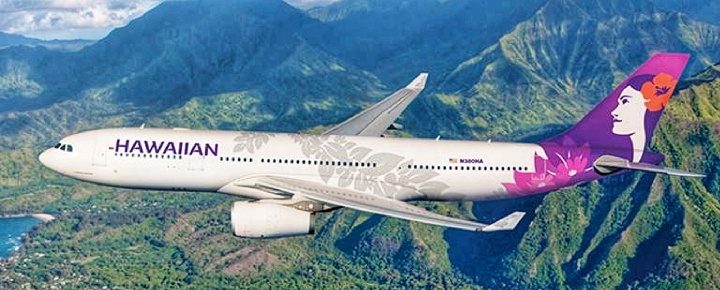

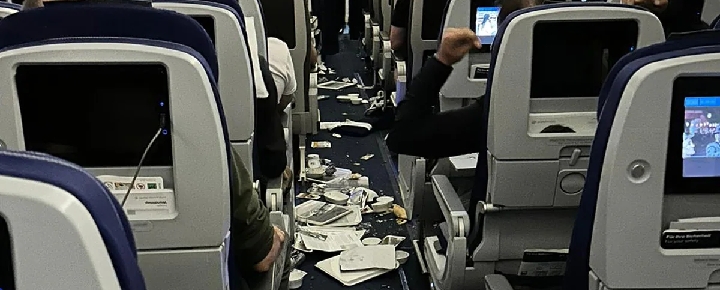
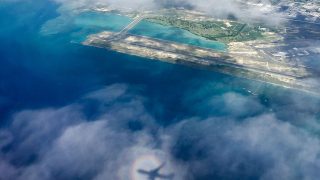
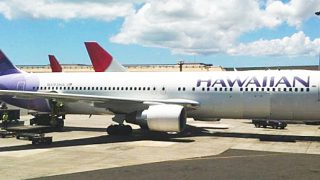
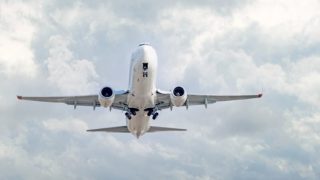
Everyone knows (or should know) to keep one’s seatbelts at least on (if not on snuggly, which is better) the entire time that their plane is in the air. Reason: any sudden aircraft drop due to unstable atmospheric conditions such as down-drafts, etc., will send un-belted passengers shooting upwards inside the plane. Any sudden pounding of one’s head on a hard surface (as in a plane’s ceiling) can cause cervical spinal fractures. In layman’s terms, that is a broken neck. Thus, one’s spinal cord can suffer irreparable harm. There has got to be an element of personal responsibility. Some turbulent air events are unpredictable.
Why do I think this nonsense has been tried before.
According to the lawyers (bless their hearts), their clients needed to be treated like children. In my mind, if you’re injured on a flight because of turbulence, the fault is on you if you’re not wearing the seatbelt (regardless if the belt light is on or off). The only exceptions are the flight attendants and those who are walking to the restroom (assuming the light is off). If the pilots aren’t warned by the weather service or other, nearby aircraft, I don’t see the airline being responsible. Bottom line…don’t be a dummy. Stay in your seat and stay belted in regardless if the seatbelt light is on or off. It’s kind of like in your car. If it’s moving, you should be wearing your seatbelt.
Good point. Like you said it’s like your car. If it’s moving you should be in your seatbelt.
Yes. “Bless their hearts!”
Stupid people who don’t follow the rules are looking for a fast buck. One way to cut these money grabbing lawsuits is if the court decides against the suit, the lawyer filing it has to pay any and all costs to all parties. Once this happens a few times, I think you will see a great reduction in cases.
Hi guys! Again, thank you for your hard work and excellent reporting. Now, on to the current story. If I’ve said it once, I’ve said it a zillion times. I’m usually talking about ignorant people that go to Queens Bath, or hike the trail and then find themselves in life-threatening situations. This Is Not Disneyland. You can’t stop the ride when you want to get off. In this case, it’s an airplane, way up high in the air. Wear your d*mn seatbelt at all times! Turbulence happens. Is it the airlines’ fault if you’re too daft to keep the belt on? Please, people, use some common sense and take responsibility for your own actions. Okay, I’m coming down from my soap box. Can somebody help me? 😉
I’m feeling your pain! Personal responsibility is so old fashion nowadays.
I have ZERO compassion for those injured after the seatbelt sign has been illuminated. I do have compassion and feel bad for the flight attendants that were injured during this incident since they have to be up to guarantee passengers are safely buckled in. If you don’t sit down and remain seated under a seatbelt when advised, I have zero compassion for them and anything that happens to you at that point is ‘on you’. Amazingly enough, those that were buckled in didn’t find their heads embedded in the ceiling. C’mon folks, let’s get a brain. We’re supposed to smarter than this.
Where are those beautiful white Maston Liners when ya need them? My brother did a 12 day trip to HI from San Francisco on the SS Lurline around 1968, I fee range on the ship for a hour before they sailed, was really neat experience.
Money grab. Just read the ignorant questions raised by the money-grabbing attorney.
Change the flight path?
You don’t see turbulence in advance like a storm. You can’t fly around it like a storm cloud etc.
Also, the attorney said they were not told to fasten seatbelts in advance.
Another lie. A lot of passengers said they were told 30 minutes out but many did not fasten their seat belts
Just a pathetic money grab by those who did not follow directions. Seen it many times flying
As a pilot I say let it playout I want to know if there was some negligence on Hawaiians part.
You only have to look the 737 MAX accidents to understand that getting to the bottom of these incidents will make it safer for all of us to fly.
Good thing I will not be on the jury. I have not been on one flight that didn’t warn of turbulence at any time and to keep your seatbelts on. Understandable when using the restroom but return to your seat and strap back in. Common sense, otherwise you take injuries into your own hands. Just my feelings on this lawsuit. In saying this, I truly am sorry people were injured. Sadly turbulence is turbulent. Note: I hate flying.
Flight attendant here. We are “informers not enforcers” because we cant physically stop every passenger from doing what they want to do. When the seatbelt sign is turned on we make an announcement that the seatbelt sign is now on and to please remain seated with your seatbelt securely fastened. If someone gets up to go the lavatory or to get something out of the overhead bin, we are required to make a reminder announcement that the fasten seatbelt sign is still on and for everyone’s safety the captain has asked us to remain seated with our seatbelts securely fastened until he turns it off. That is what is required by the FAA because they know people will do what they want. All we are required to do is warn them. The rest is on them. Thanks!
Most every flight I’ve been on in recent years there is an announcement that you should keep your seat belt fastened even when the seat belt sign is off. There is a reason for this, and this is it.
All it takes is a land shark that is looking for a huge payout because the assumption is that if a company is sued they would rather settle than go to trial. William Shakespeare definitely had it correct when he spoke about what to first do with lawyers!
This is why we see so many advertisements on TV and huge billboards about suing trucking companies, cuz they know the required dollar insurance amounts the companies have to carry to be in operation.
Soon Hawaiian Airlines will suspend flights to and from Hawaii.
Ok so, the world is coming to an end. People need to get a…. Grip? Life? Brain?
“Seat belt enforcement wasn’t implemented.” No it was not implemented, But, I am so very tired and disgusted that We have to keep paying for everyones ignorance. People have the , well Im not putting my belt on, I paid for this flight! This mentality is ignorance and it is abound in many avenues of life. causing us all to pay for the expense that companies have to endure and along to the public, ignorant or educated. I’m sorry Hawaiian airlines, for the poor judgment of the passengers!
Yes the seat belt rules were announced thirty minutes out and the lights were on.
Multiple passengers who were not hurt even said this after landing.
1. Were the fasten seatbelt signs on?
2. Did the cabin crew announce this over the intercom?
If the answer to both of these questions is “yes” then it’s a closed case. Flight attendants are not expected nor should they be expected to “enforce” the rules among those who refuse to follow them.
So sad. People without common sense or sense of self responsibility sue others for their ignorance.
Another example of how lawyers have gotten their bad name.
If the Fasten Seat Belt sign was on then each person not bucked in is at fault.
People need to take responsibility for there actions!
That’s a big If since that’s one of the questions that the attorneys are trying to determine the answer to. So, if the seatbelt sign was on, and those passengers weren’t wearing theirs, then, absolutely there’s no liability on the airlines part. If, on the other hand, the seat belt sign wasn’t on, And the crew had any reason to believe that there was bad weather in the area, it’s a different story. Like the BOH story says, 10 minutes before it’s decent to land Is when a lot of folks take that last minute trip to the lavatory, etc. So, if the crew new about bad weather, and didn’t turn on that sign, well, then the airline bares some responsibility.
I fly to Hawaii every year as well as other trips across the mainland and across the Atlantic. My Rule to avoid injuries caused by turbulence is simple.. I Keep My Seatbelt on at all times.
Aloha
I agree. Anyone who has flown across the western Pacific, like to Japan or Korea, is well aware of what kind of trouble turbulence can cause. Keep the seat belt fastened and leave your seat only when necessary, like to use the restroom.
It sounds like it would be difficult to prove all the elements were followed in the event of bad weather/turbulence. Maybe he said/she said. Unless specific records are recorded. Even those may not be accurate. The flight attendants have a lot of people to deal with. It’s hard to make sure everyone has on their seatbelt. It was also said that turbulence can come out of a clear sky. It might be a case of when you fly you assume certain risks. A thing is not common but it may happen. I’ve never had any serious problems but now I understand how important seatbelts are. A pilot on a flight I was on decided not to have drink service. He noticed some potential bad weather. The place for the cart was to be put away and everyone belted in seats.
This is what happens when you have irresponsible humans acting like children who should not be reminded minute after minute about keeping your seat belt on while on flight! Spoiled, opportunistic to make money, cheap Americans!!!! Employees at Hawaiian are not maids, nor policemen to be checking on every single one, every single minute of a flight if they have their seat belt on!
This also happens when we bring trashy, cheap tourism into the islands! I wish we can have Hawaii be a destination for better tourism instead of the cheap, low class tourism that we have had in the last few years, right before Covid19 and way after Covid19! We, the People of Hawaii deserve better so those Marketing Hawai’i, change your strategies!!!!!
Amen brother
Getting worse every year here
Like we wouldn’t want to be accountable or responsible enough to wear our seatbelts at all times – now would we?
We need to make it someone else’s fault!
well said!
Aloha Rob+Jeff. I know that it is a standing rule that seat belts are required at all times when flying. Only if you need the restroom should you be unbuckled. There needs to be heavier enforcement from now on. No excuse to be wandering around the plane. However I am sure that Hawaiian can pay off the lawsuits with their profits. Maybe that loss will lead them to mandatory enforcement from now on. Thanks for your excellent coverage on all topics. Warm regards.
Hi Debra.
Thanks, and our best to you.
Aloha.
Given everything that flight attendants are busy doing,I have no idea
how they would enforce that.
Yep, sue God for the air turbulence, these ambulance chasers will sue anybody to get their 40% plus court costs. And don’t mention the only time you’re without the seatbelt in place during a flight is a potty break or emergency. Geez!!!!!! Case should get tossed a frivolous lawsuit.